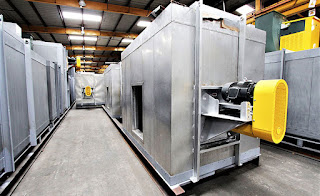Improving Efficiency and Sustainability in Composites Bonding

A new system comprising a curing oven, regenerative thermal oxidizer (RTO) , and secondary and tertiary heat exchangers can help reduce operating costs while ensuring the safe removal of volatile organic compounds during composite bonding processes. Among all chemical curing techniques, convection and radiant thermal curing represent the most widely used applications for adhesives and sealants . During the curing process, adhesives and sealants usually pass through two physical transformations—evaporation and condensation—while being applied to other materials. In addition to physical changes, the specific temperatures cause chemical changes in adhesives and sealants at a molecular level, where polymer chains’ crosslinking occurs. Crosslinking represents the final step of polymerization, which optimizes the tensile strength of the material and solidifies the adhesive bonds in the curing process. Achieving this critical threshold requires not only predetermined temperature ranges but...

